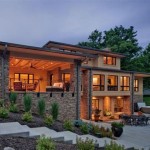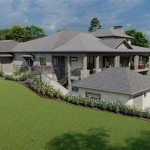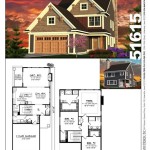Stone and Timber Home Plans: A Comprehensive Overview
Stone and timber construction embodies a timeless aesthetic, blending natural materials to create homes that are both durable and visually appealing. Stone and timber home plans represent a significant departure from conventional building approaches, often incorporating complex structural designs and demanding specialized construction techniques. Understanding the nuances of such plans is crucial for homeowners and builders alike.
These homes often evoke a sense of rustic elegance, connecting the interior spaces with the surrounding landscape. The combination of robust stone and warm timber creates a unique character, a feeling of permanence and comfort. However, achieving this aesthetic requires careful planning and a thorough understanding of the materials involved, the construction processes, and the architectural considerations.
Stone and timber home plans are not limited to a specific architectural style. They can be adapted to various designs, ranging from traditional cabins and farmhouses to modern and contemporary structures. The versatility of the materials allows for a wide range of design possibilities, catering to diverse preferences and site conditions.
Key Considerations in Stone and Timber Home Design
The design process for a stone and timber home differs significantly from that of a standard frame house. Several key factors must be considered to ensure a structurally sound, aesthetically pleasing, and energy-efficient home.
Material Selection: The choice of stone and timber is paramount. Different types of stone possess varying characteristics, including compressive strength, porosity, and aesthetic appeal. Granite, limestone, sandstone, and fieldstone are common choices, each offering unique advantages and disadvantages. Similarly, the species of timber used significantly impacts the structural integrity and appearance of the home. Douglas fir, cedar, and oak are frequently employed, known for their strength, durability, and resistance to decay.
The selection process should consider not only the aesthetic preference, but also the availability of materials locally. Utilizing locally sourced materials can reduce transportation costs and environmental impact, while also ensuring that the materials are well-suited to the local climate. Furthermore, the compatibility between the chosen stone and timber is essential. For example, a porous stone might require a different type of sealant or protective coating when used in conjunction with a particular type of timber.
Structural Engineering: Stone and timber construction presents unique engineering challenges. The dead load of stone is significantly higher than that of conventional building materials, requiring a robust foundation and structural frame. Timber framing, often used in conjunction with stone, involves complex joinery and load-bearing calculations. A qualified structural engineer with experience in stone and timber construction is essential to ensure the structural integrity of the home.
The engineer will analyze the load-bearing capacity of the stone walls, the timber frame, and the foundation, taking into account factors such as wind load, seismic activity, and snow load. They will also design the connections between the stone and timber elements, ensuring that they can withstand the stresses imposed upon them. Proper engineering is crucial for preventing structural failures and ensuring the longevity of the home.
Energy Efficiency: Historically, stone and timber structures were often drafty and inefficient. Modern stone and timber home plans prioritize energy efficiency through various strategies. Proper insulation is crucial. This can be achieved through the use of insulated concrete forms (ICFs) behind the stone veneer, spray foam insulation within the timber frame, or other advanced insulation techniques.
The design should also consider passive solar heating and cooling. Orienting the home to maximize solar gain in the winter and minimize solar gain in the summer can significantly reduce energy consumption. Properly sized overhangs, strategic window placement, and the use of thermal mass can further enhance energy efficiency. Furthermore, high-performance windows and doors are essential for minimizing heat loss and drafts.
Architectural Styles and Design Elements
Stone and timber construction lends itself to a variety of architectural styles, from rustic and traditional to modern and contemporary. The choice of style will influence the overall design of the home, including the layout, fenestration, and detailing.
Traditional Styles: Traditional stone and timber homes often feature a rustic aesthetic, characterized by exposed timber beams, natural stone walls, and handcrafted details. These homes typically incorporate elements such as large fireplaces, timber frame porches, and gable roofs. The interior spaces often have an open floor plan, with exposed timber framing creating a sense of warmth and character.
Common stylistic influences include English Tudor, French Country, and Adirondack. These styles emphasize natural materials, handcrafted details, and a connection to the surrounding landscape. The use of reclaimed timber and locally sourced stone can further enhance the authenticity and character of a traditional stone and timber home.
Modern Styles: Modern stone and timber homes often feature clean lines, large windows, and open floor plans. These homes integrate stone and timber in a contemporary way, often using these materials as accent features rather than as the primary structural elements. The combination of stone and timber with glass and steel creates a striking contrast, resulting in a sophisticated and modern aesthetic.
Modern designs often incorporate sustainable building practices, such as the use of recycled materials, passive solar heating and cooling, and rainwater harvesting. The emphasis is on creating a comfortable and energy-efficient home that blends seamlessly with the surrounding environment. The interior spaces are typically minimalist and functional, with an emphasis on natural light and open views.
Design Elements: Regardless of the architectural style, certain design elements are commonly found in stone and timber homes. Exposed timber beams are a defining feature, adding warmth and character to the interior spaces. Stone fireplaces serve as focal points, providing warmth and ambiance. Large windows and doors connect the interior spaces with the surrounding landscape, allowing for natural light and ventilation.
Consideration should be given to the scale and proportion of the stone and timber elements. Overly large stone walls can feel imposing, while undersized timber beams can appear weak. A well-balanced design will create a harmonious and aesthetically pleasing result. Furthermore, the texture and color of the stone and timber should be carefully considered, as these factors will significantly impact the overall appearance of the home.
Construction Process and Cost Considerations
Building a stone and timber home is a complex undertaking that requires specialized skills and experience. The construction process differs significantly from that of a conventional frame house, and the cost can be significantly higher.
Construction Process: The construction process typically begins with the laying of the foundation, which must be designed to support the weight of the stone walls. The timber frame is then erected, followed by the installation of the stone veneer or the construction of the stone walls. The roof is then installed, followed by the installation of the windows and doors.
The construction of the stone walls can be particularly challenging, requiring skilled stonemasons to ensure that the stones are properly laid and mortared. The timber frame requires precise joinery and careful assembly. Coordination between the stonemasons and the timber framers is essential to ensure that the stone and timber elements fit together seamlessly.
Cost Considerations: The cost of building a stone and timber home can vary significantly depending on the size and complexity of the design, the type of stone and timber used, and the location of the project. Generally, stone and timber homes are more expensive to build than conventional frame houses, due to the higher cost of materials and labor.
The cost of the stone will depend on the type of stone used and the distance it must be transported. The cost of the timber will depend on the species of timber used and the complexity of the timber frame. The cost of labor will depend on the skill and experience of the stonemasons and timber framers.
It is important to obtain detailed cost estimates from multiple contractors before beginning the project. The cost estimates should include all materials, labor, and permits. It is also important to factor in contingencies for unexpected expenses, such as unforeseen site conditions or material price increases.
Long-Term Value: While the initial cost of building a stone and timber home can be higher, these homes often retain their value better than conventional frame houses. The durability of the materials and the timeless aesthetic make them highly desirable to potential buyers. Furthermore, stone and timber homes often have lower maintenance costs than conventional frame houses, due to the durability of the materials.
The decision to build a stone and timber home is a significant investment. However, the result is a unique and beautiful home that will last for generations. Careful planning, attention to detail, and the selection of qualified professionals are essential for ensuring a successful project.

Luxury Timber Frame Home Plans Customizable Golden Eagle

Timber Frame House Plan Max Fulbright Designs

Timber Frame House Plan Max Fulbright Designs

Timber Frame House Plan Max Fulbright Designs

Floor Plans Stonemill Log Timber Homes

Design Your Escape Timber Frame Home Plans For Modern Living

Timber Frame House Plan Max Fulbright Designs

Design Concepts Colorado Timberframe

Rustic Timber Frame House Plans Customizable Golden Eagle

Tour This Captivating 2 Bedroom Rustic Retreat With Timber Accents And Stone Detailing 1 362 Sq Ft Floor Plan Included








